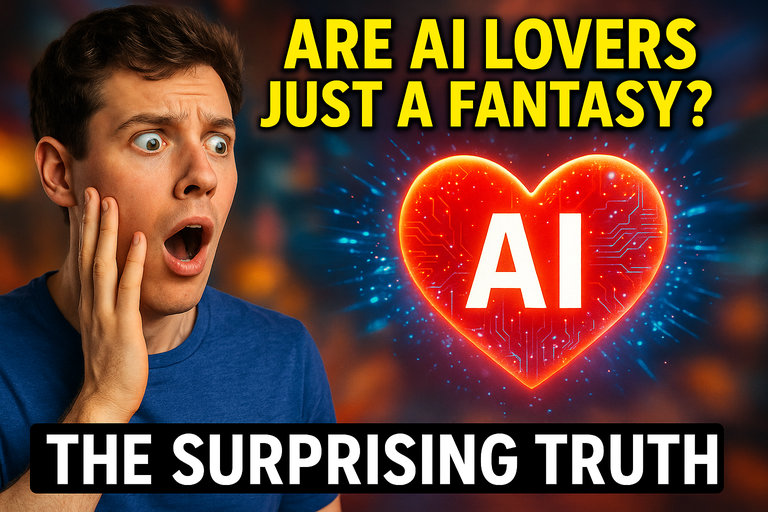
Is Your AI Companion Really Your New Best Friend… Or Just a Beautiful Lie?
Last weekend, a friend sent me that article. The one where LinkedIn cofounder Reid Hoffman drops a bomb: "AI can’t be your friend — and pretending it can is harmful." (If you missed it, check out the original piece here).
At first, I scoffed. I mean, we live in 2025. AI helps write our emails, recommends our skincare routines, and yes… some of us even confess our loneliness to digital companions late at night. But as I dug deeper, I realized: This debate isn’t just happening on tech blogs — it’s sitting in our bedrooms and relationships, too.
Let’s Get Real: Can AI Fill the Void?
Hoffman’s warning isn’t a dystopian “robots will steal your soul” cliché. He’s worried that AI, sold as a replacement for real social connection, could make us forget how to be human — and maybe even stop reaching for each other.
Ever texted with a virtual lover or cuddled up with an AI-powered toy and thought, “Wow, this is almost better than real life”? You’re not alone. The allure is real. No messy feelings, no judgment — just a digital presence that’s literally programmed to care.
But here’s the open loop: Is this really connection? Or just a pixel-perfect simulation that leaves us more adrift?
AI Intimacy: Escapism or Empowerment?
If you’ve ever scrolled through #AIPartner or wandered Reddit’s virtual companionship threads, you know the stories. People bonding with language models. Customized moans, targeted “I love you”s, and deep-dive conversations that seem to get you in ways Tinder never could.
But when Hoffman warns about “harm,” he’s thinking about the times we ignore real friends for a chatbot, or when digital comfort replaces the messy magic of in-person connection.
Still, the conversation isn’t black and white. For some, especially those who are disabled, neurodiverse, or navigating touch-starved periods, AI companions offer something miraculous: Autonomy. Exploration. And a safe space to practice vulnerability.
So before we dismiss these experiences as “fake,” maybe we need to ask: How can AI empower healthy exploration, not just replace what’s real?
Tech That Doesn’t Pretend: The Orifice AI Difference
Here’s where things get spicy — and why the conversation needs a serious update. Enter Orifice AI: A device that combines computer vision, text-to-speech, and even generative moaning to create immersive, intimate experiences. Imagine a gaming controller for your body, but it listens, talks, and reacts to you. Yup, this is the real deal.
What’s wild about Orifice AI: It doesn’t try to convince you that your AI companion is a human BFF. Instead, it frames itself as a tool for play, exploration, and self-discovery — rather than a replacement for flesh-and-blood relationships.
- Self-heating silicone for lifelike comfort
- Integrated cameras and microphones (privacy controls included, thank goodness)
- Smart AI responses that adapt to both casual banter and full-body storytelling
You’re in the driver’s seat, and the AI is your guide, not your substitute for a life partner. It’s intimacy on your terms, with transparency about what’s powered by code — and what isn’t.
Want more details about how this tech actually works? You can always take a peek at their official site for the deep dive. It’s a rabbit hole worth falling into.
So, Does AI Belong in Our Love Lives?
Reading Hoffman’s caution, and then holding the Orifice AI in my hands, I landed somewhere in the middle. AI isn’t a “friend” in the old-school sense — it can’t hug you back or remember your favorite inside joke. But it can be a portal to self-knowledge, sensual play, and maybe even a little confidence before you get back out there IRL.
If you’re already in a relationship, AI can be a fun add-on — not a replacement. Flying solo? It’s a chance to explore boundaries and desires you didn’t know you had. The danger isn’t the tech itself, but forgetting that digital connection isn’t a substitute for the messy, magical, unpredictable beauty of human touch.
The Big Question: Where Do We Go From Here?
Here’s your open loop, dear reader — because this story isn’t finished. How do you see AI fitting into your own journey? Is it a bridge to deeper intimacy… or just a beautiful illusion?
Drop your thoughts, stories, or wildest dreams in the comments. And next time someone tells you AI “can’t” be part of real connection, remind them: It’s not about replacing what’s human. It’s about expanding what’s possible.
Stay adventurous, stay curious — and never stop asking the big questions.